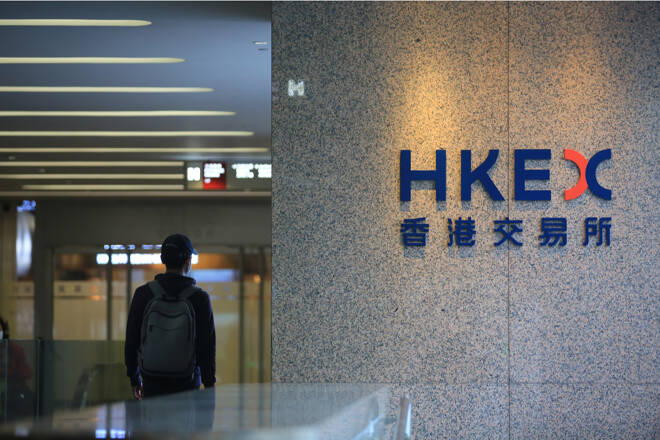Advertisement
Advertisement
Hang Seng Index Gains on Alibaba, Bilibili Earnings; Nikkei Falls on Yen Strength
By:
Key Points:
- Japan’s inflation accelerated to 4%, boosting expectations of a BoJ rate hike as the yen strengthened below 150.
- Hang Seng Index rallied 1.58% as Alibaba’s earnings beat expectations, fueling a tech-led surge in Hong Kong stocks.
- ASX 200 extended its losing streak, weighed by weak bank earnings, while gold and mining stocks cushioned the decline.
US Markets Slide As Tariff Concerns Weigh on Sentiment
US equity markets posted losses on Thursday, February 20, as renewed tariff concerns impacted risk sentiment. The Dow slid by 1.01%, while the Nasdaq Composite Index and the S&P 500 fell 0.47% and 0.43%, respectively.
Walmart (WMT) tumbled 6.55% after reporting softer-than-expected revenue, weighing on consumer sector sentiment.
Meanwhile, escalating US tariff threats added to market jitters. President Trump’s proposed levies on autos, chips, and pharma set a cautious tone ahead of Friday’s Asian market session.
US Jobless Claims Signal Resilient Labor Market
On February 20, US labor market data supported the Fed’s wait-and-see approach toward monetary policy. Initial jobless claims rose to 219k (week ending February 15), marginally up from 214k (week ending February 8).
Tight labor market conditions may bolster wage growth, fueling consumer spending and demand-driven inflation. A higher inflation outlook would potentially leave the Fed in a policy-holding pattern.
Japan’s Inflation Accelerates Bolstering BoJ Rate Hike Expectations
On Friday, February 21, Japan’s inflation figures signaled a more hawkish Bank of Japan rate path. The annual inflation rate accelerated from 3.6% in December to 4% in January, exceeding the BoJ’s 2% target. Core inflation also edged higher to 3.2%.
Service sector PMI data suggested continued economic expansion, rising from 53.0 in January to 53.1 in February. However, softer employment growth and input prices poured some cold water on the inflation numbers.
Usamah Bhatti, economist at S&P Global Market Intelligence, commented on the February survey:
“Employment levels among Japanese private sector firms rose at their slowest rate in just over a year. Additionally, the rate of input price inflation across the private sector was little changed from January’s historically sharp pace.”
Hang Seng Index Rallies on Corporate Earnings
In the Asian markets, the Hang Seng Index gained 1.58% on Friday morning, driven by positive corporate earnings. Alibaba (9988) beat revenue forecasts, with Bilibili reporting a first ever quarterly profit.
The Hong Kong Technology Index rallied 2.27% in the morning session, with Alibaba surging 9.43%. Baidu (9888) and Tencent (0700) also posted strong gains. Meanwhile, Bilibili (9626) was up 9.04%.
Mainland China’s equity markets also advanced despite ongoing US tariff threats targeting autos, chips, and pharmaceuticals. The CSI 300 and the Shanghai Composite Index rose 0.38% and 0.06%, respectively.
On February 20, China’s Premier Li pledged to introduce more consumption-focused economic policies to mitigate the potential effects of US tariffs. Thursday’s pledge followed earlier communications, where Beijing highlighted plans to boost domestic consumption.
Nikkei Falls as Yen Dips Below 150
Japan’s Nikkei Index dropped by 0.53% on Friday morning. Rising bets on a Bank of Japan rate hike and US tariff concerns drove demand for the Japanese Yen, pressuring Japanese stocks. The USD/JPY pair tumbled 1.21% on February 20, closing at 150.529. Significantly, the pair dropped below 150 for the first time since December 9.
Among notable decliners were Softbank Group Ltd. (9984) and Tokyo Electron (8035), which fell by 0.76% and 0.16%, respectively.
ASX 200 Eyes Five-Day Losing Streak
Australia’s ASX 200 Index fell 0.25% on Friday morning, extending its decline for a fifth consecutive session. Losses in the tech and banking sectors pressured the broader market.
Commonwealth Bank of Australia slid by 2.24% as the banking sector struggled after disappointing earnings reports. The S&P/ASX All Technology Index declined by 1.40%.
Meanwhile, gold and mining stocks cushioned the downside on rising gold and iron ore prices. Fortescue Ltd. (FMG) and Rio Tinto Ltd. (RIO) led the gains, rallying 2.36% and 2.47%, respectively. Iron ore prices soared 2% to $827.46 on February 20, while gold inched closer to $3,000.
Outlook: Key Risks and Opportunities
Looking ahead, corporate earnings, central bank policy signals, and US tariff developments will influence market sentiment.
While innovation and strategic partnerships in AI and technology may support growth, ongoing tariff uncertainty could drive further volatility.
Get ahead of market shifts with expert insights and in-depth analysis here—stay informed and make smarter investment decisions.
About the Author
Bob Masonauthor
With over 28 years of experience in the financial industry, Bob has worked with various global rating agencies and multinational banks. Currently he is covering currencies, commodities, alternative asset classes and global equities, focusing mostly on European and Asian markets.
Did you find this article useful?
Latest news and analysis
Advertisement
